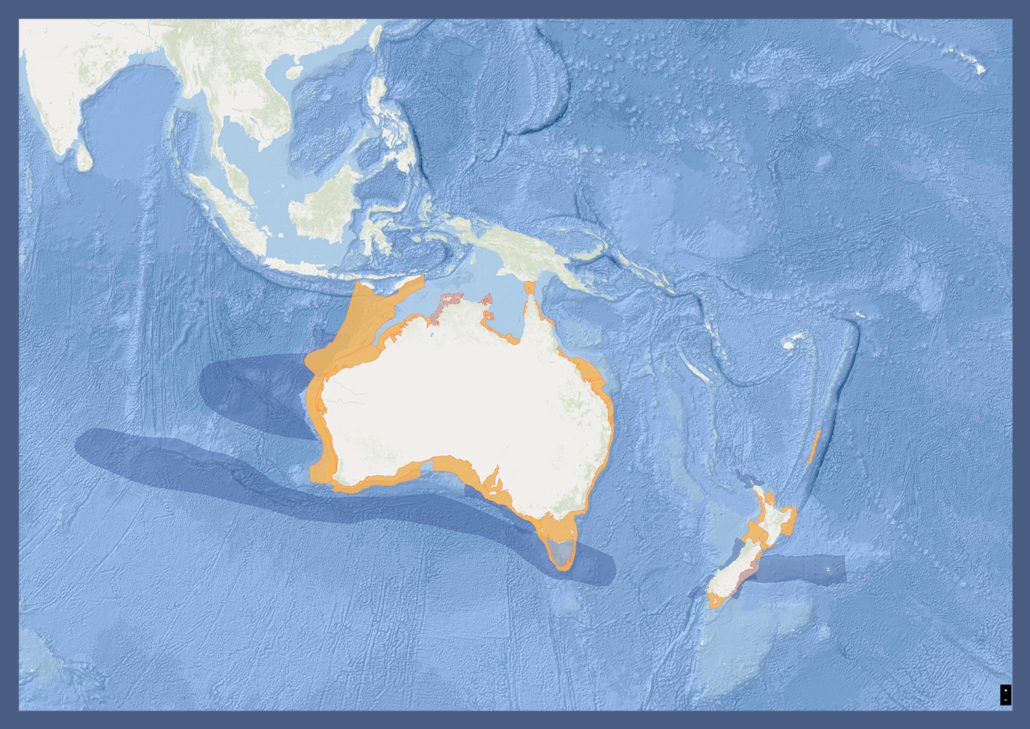Australia-New Zealand and South East Indian Ocean
Perth, Australia, 10-14 February, 2020
The Australia-New Zealand and South East Indian Ocean Workshop, the sixth IMMA Regional Workshop, was held in Perth, Western Australia, between 10 and 14th February 2020. The Workshop was supported by the Global Ocean Biodiversity Initiative (GOBI), within the International Climate Initiative (IKI) of the Government of Germany and a contribution from Whale and Dolphin Conservation. The report of the IMMA Regional Workshop for Australia-New Zealand and South East Indian Ocean can be dowloaded from here, and the Executive Summary from the Workshop is presented below. The main results are also succinctly described in the News Section of this website.
Australia-New Zealand and the South East Indian Ocean IMMA Workshop Executive Summary
From 10 to 14 February 2020, the IMMA Regional Workshop for Australia-New Zealand and South East Indian Ocean was held in Perth, Australia, with the goal to identify and delineate Important Marine Mammal Areas — IMMAs. Starting with 438 Areas of Interest (AoI), more than 50 of which were submitted before and during the meeting by participants, and the others comprised of existing marine mammal spatial designations, some 45 candidate IMMAs (cIMMAs) were identified and proposed through an expert-based process, utilising dedicated selection criteria.
Following independent review and consideration of how the criteria supported IMMA identification, 31 IMMAs were accepted for full status, with 2 remaining as cIMMAs and 13 becoming AoI. The workshop was attended by 31 experts and observers from seven countries or overseas territories, including Australia, Indonesia, Italy, New Zealand, Turks and Caicos Islands, United Kingdom and United States of America. The observers came from the Australian federal and state governments and the IMMA Review Panel. The five members of the IMMA Secretariat were from Italy and the UK. In a number of cases, the expert held a main residence in a country other than where the research was done, and a number of experts had worked in multiple areas in the region.
The experts identified cIMMAs for the first time for Endangered Hector’s and Critically Endangered Maui dolphins and Vulnerable Australian humpback and Australian snubfin dolphins, only recently recognised as species; as well as nearshore habitat for most of the world’s remaining dugong; and deep canyons with Vulnerable sperm, and Endangered blue and pygmy blue whales. Also living in Australia and covered by the cIMMA proposals are two species of bottlenose dolphins and the Endangered Australian sea lion. The full list of marine mammal species included in the region’s IMMAs, together with the boundaries of accepted IMMAs, as well as other cIMMAs and AoI, are now available as part of the IMMA e-Atlas. Still, it was recognised that there are substantial data gaps for marine mammals across many species groups in the region — partly due to the challenges from logistical issues, as well as lack of funding for larger scale surveys and other research, particularly in the High Seas.
The complete list of 31 areas awarded IMMA status and the two areas with approved cIMMA status can be viewed on the searchable IMMA database and the e-Atlas.
